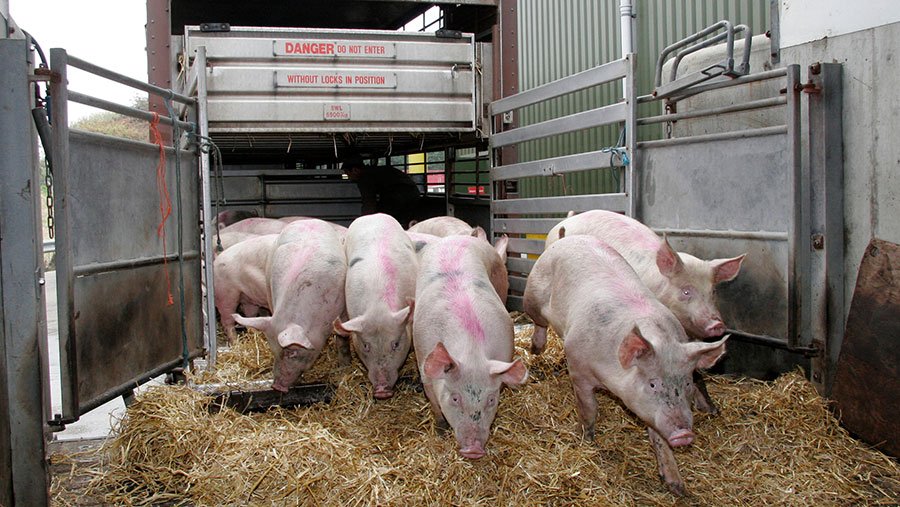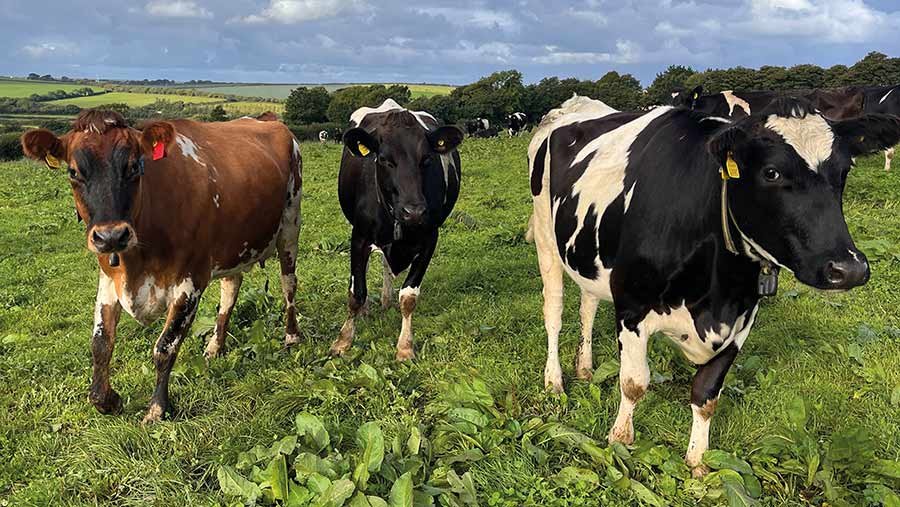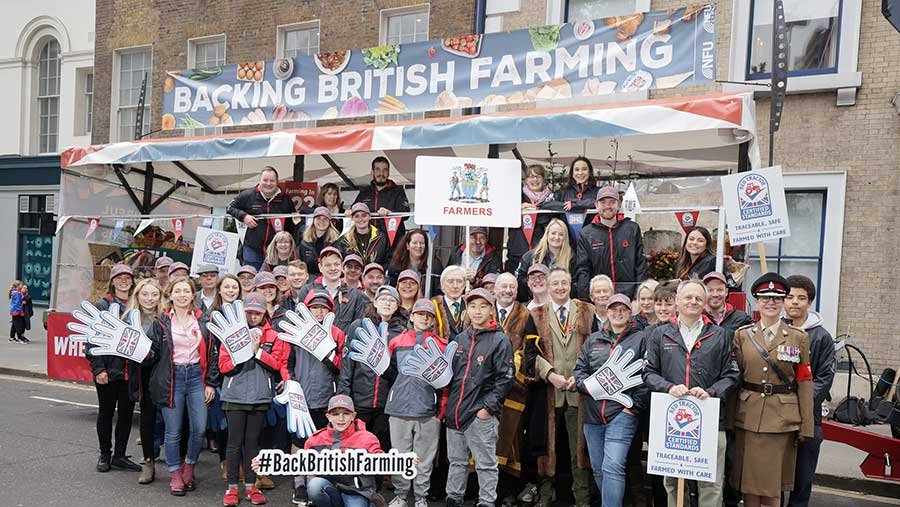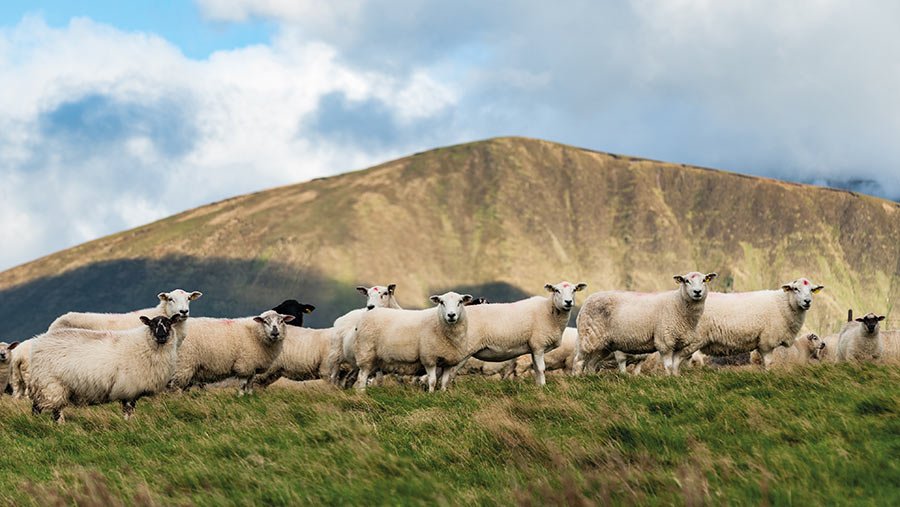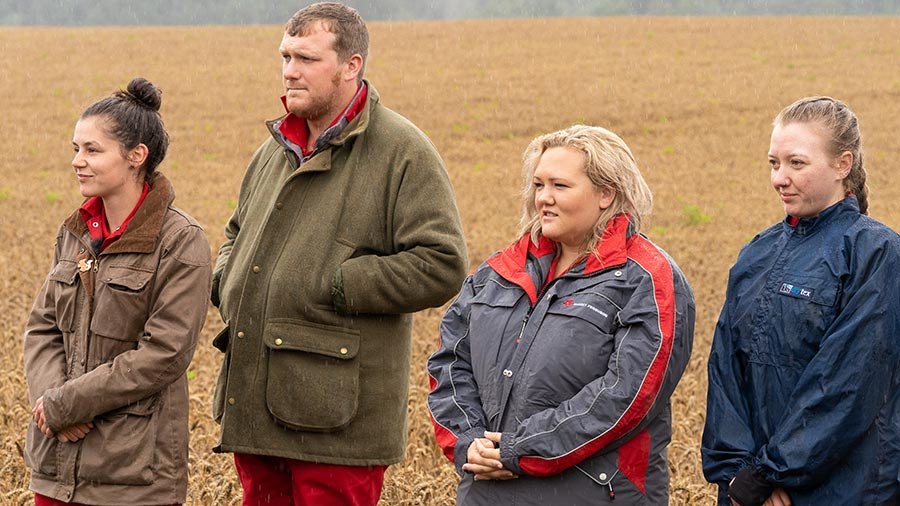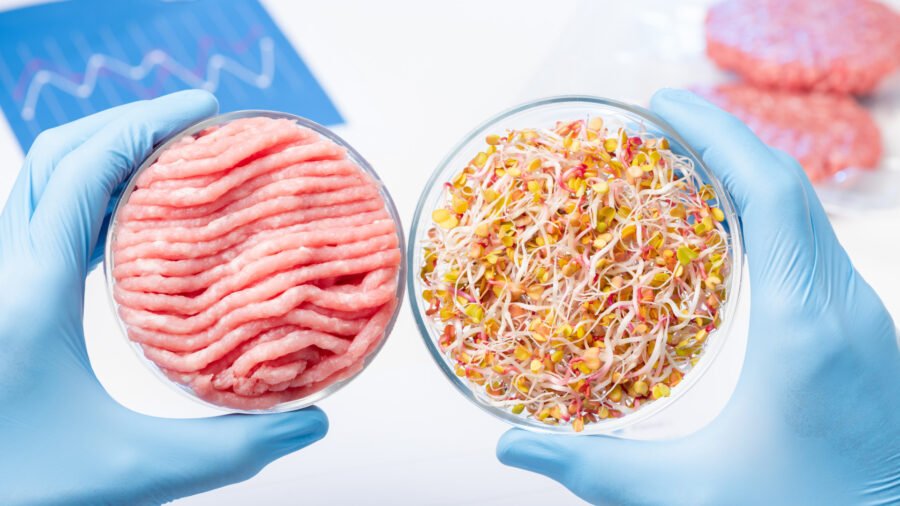Farm Net Zero is a National Lottery-funded project running across Cornwall, which aims to show the contribution agriculture can make to achieving net zero.
As part of this, three demonstration farms are trialling innovative management practices.
See also: How a dairy project aims to increase farm soil carbon by 25%
“We will carry out soil health assessment, soil carbon work and we will also run the farm carbon calculator,” says Hannah Jones of Farm Carbon Toolkit, who is working with these farms.
“We will incorporate the diversity of enterprises, the soil type, the feed system and the cropping system.”
The project, launched in 2021, is collaborating with other organisations in Cornwall, including Duchy Rural Business School and Westcountry Rivers Trust, to improve farmer knowledge and share results and learnings with the wider public.
Demonstration farm: Ennis Barton, Fraddon
Ten years ago, maximising production would have been Andrew Brewer’s main goal on his dairy farm, but he says that has now changed to optimising it.
Farm facts
- 445ha (1,100 acres) owned land
- 202ha (500-acre) milking platform
- 450-head Jersey-cross dairy herd, supplying Arla
- Autumn-calving, grass-based system
Andrew Brewer © Hayley Chapman
He is investigating four main areas:
1. Multispecies leys
Running two separate groups of cows – one on perennial ryegrass leys and one on 40ha (100 acres) of multispecies leys – is allowing Mr Brewer to look at differences in rumination, production and soil health.
So far, there appears to be no difference in rumination levels, measured by activity collars, and the only change is an increase in milk solids produced by the group on diverse swards.
The leys are also giving strong growth with no nitrogen applied and are enabling paddock grazing, which he knows lifts soil carbon levels.
He has now shifted his focus to Irish, grass-proven genetics to breed stock for this system.
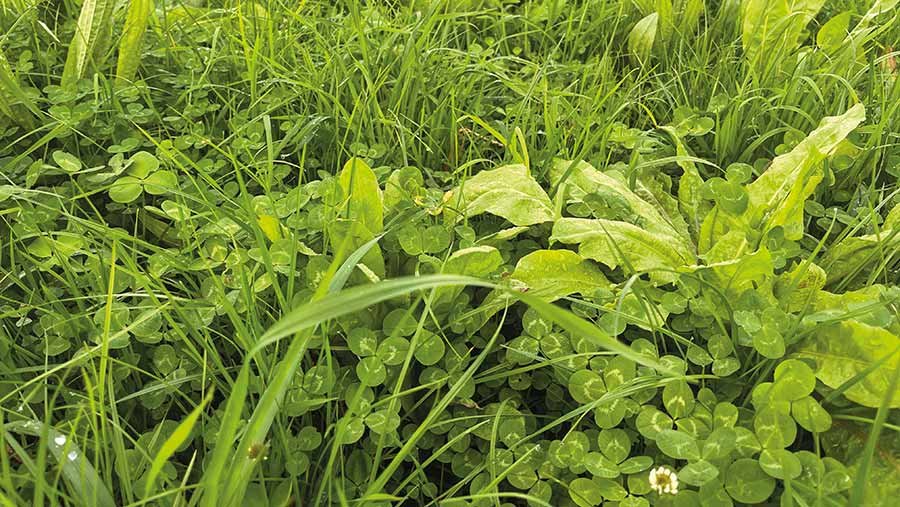
Multispecies ley at Ennis Barton © Hayley Chapman
2. Vegetable contracts
Mr Brewer is trialling how growing vegetables within the milking platform works as ground preparation for reseeding.
Land is leased to a vegetable grower in May/June, after spring grazing, and is returned once the main potato or cabbage harvest has been taken.
Cows then graze vegetable residues, and the ground is direct-drilled with a cover crop or multispecies ley.
Last year, 8t dry matter (DM)/ha of vegetable residue was used, leaving grass to be silaged instead.
Mr Brewer wants to understand how much carbon is lost from the soil through cultivation for vegetables and how quickly that can be recovered.
3. Woodchip bedding
Woodchip bedding is used instead of straw in calf housing and the loose shed one year, then outside as a dry lying area in the second year, before being spread on grassland the following spring.
The woodchip is treated with a biological inoculant. The theory is this contains beneficial bacteria and fungi that can improve soil health when spread, while also reducing ammonia emissions from the bedding.
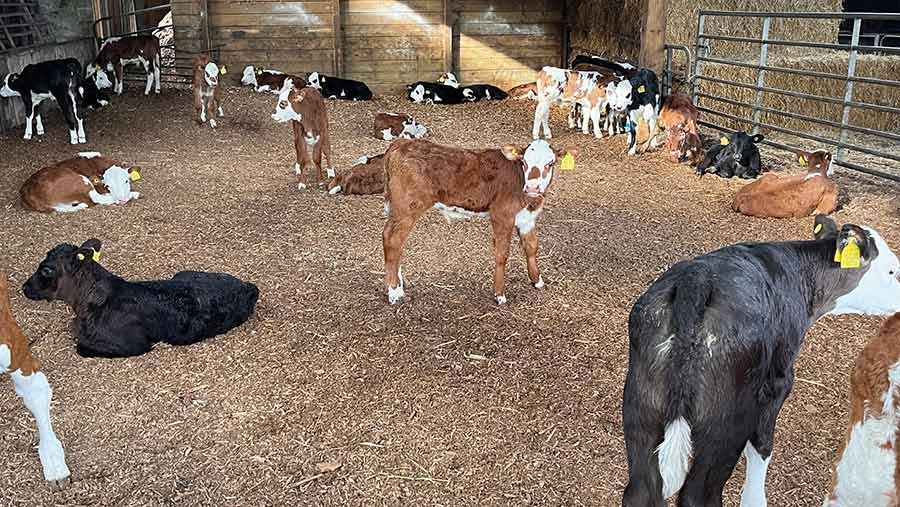
Calves on woodchip bedding © Hayley Chapman
4. Diverse cover crops
“We are looking at unlocking potassium and phosphorus and using clover to take nitrogen from the air,” says Mr Brewer.
He anticipates lower yields of forage as a result, but wants to see how much cost can be taken out of the business, while achieving optimal production.
Central to that are cover crops that maintain or improve soil structure, provide high-quality forage over the winter and enable direct drilling of the next grass or multispecies ley.
Early results with crops, including species such as vetch and berseem clover, suggest there may be some compromise between cover crop yield and growth of the following grass ley later in the season.

Diverse cover crop 13-way mix © Hayley Chapman
Demonstration farm: Blable Farm, Wadebridge
Mike and Alison Roberts, who farm with their son, Sam, are questioning every part of their mixed farming system to drive sustainability and profitability.
They have been bringing back into grass 60ha (150 acres) they previously had rented out for vegetable growing and are focusing on more diverse leys for their suckler beef.
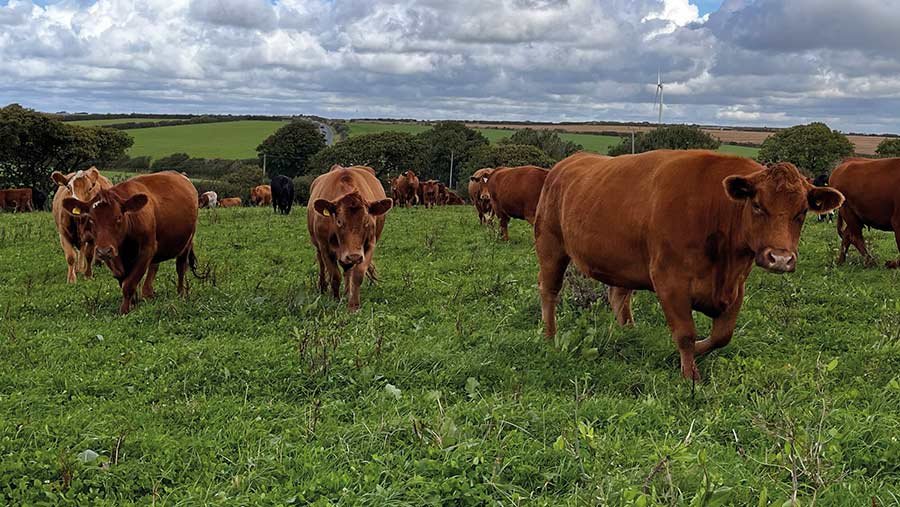
Cattle at Blable Farm © Hayley Chapman
Their main trials include:
1. Herbal mixes
The farm is in its third year of grazing paddocks, with 80ha (200 acres) put down to herbal leys. Now, Mike and Sam want to experiment with the smaller herbs.
Previously, they had planted species such as sheep’s parsley, sheep’s burnett, yarrow and bird’s-foot trefoil in a 12m-wide strip running through the middle of some paddocks that were down to a grass mix, including chicory and plantain.
The group of heifers in that rotation showed a clear preference for this grazing strip.
Mike and Sam now plan to trial a full 9ha (22-acre) grazing rotation on only these smaller herbs to see if there is any effect on liveweight gain.
Farm facts
- 200ha (500 acres) of grass, arable, scrub and woodland
- 150 pedigree Stabiliser and Stabiliser-cross sucklers
- 50-200m above sea level
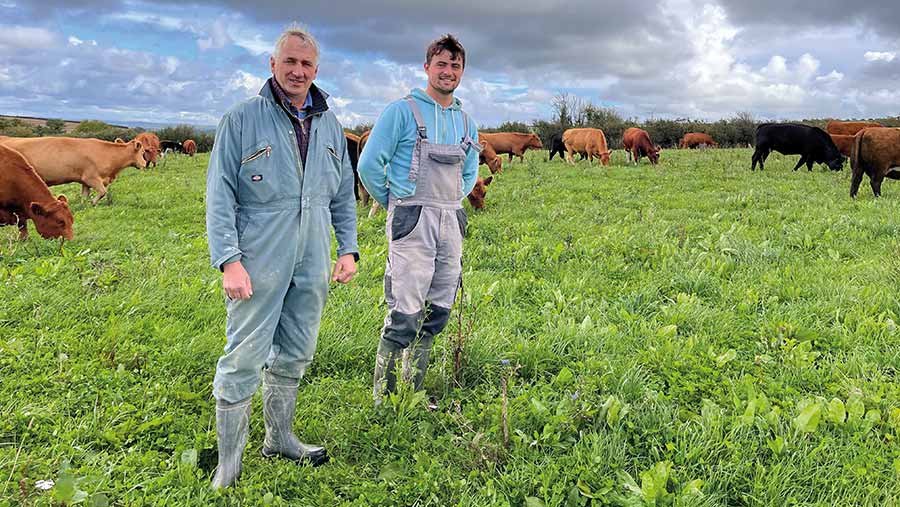
Mike (left) and Sam Robert © Hayley Chapman
2. Outwintering
Keeping sucklers out all winter is a big focus for the farm, most of which is on a relatively dry medium loam, although some is more stony ground with very little subsoil.
“We used to keep cows out on fodder beet, but found it hard on cows and hard on the ground in a wet winter,” says Mike.
Last year, outwintering cows on deferred grass paddocks and supplementing with hay worked well, while weaned calves were outwintered on grass with round bales of silage.
“The calves gained 0.4kg a day and we are quite happy with that. We also saw compensatory growth in the spring,” says Sam.
However, there were some issues with silage eye, which, combined with the cost of silaging and the limited amount of dry matter produced, have encouraged the Robertses to try new cover crops for outwintering.
3. Cover crop mixes
They are trialling four mixes for yearlings, in-calf heifers and first-time calvers this winter:
- A 13-way mix, including varieties of phacelia, rape, radish, forage rye, oats, kale, clover, vetch and sunflowers
- A 10-way mix
- A six-species mix
- A three-way mix.
Mike is hoping that the mixes will provide a crop a bit like rape or kale that can be planted into ground that has been used for deferred grazing.
These fields can be disced and then drilled with the cover crop, which should be thick enough to smother grass and any undesirable plants.
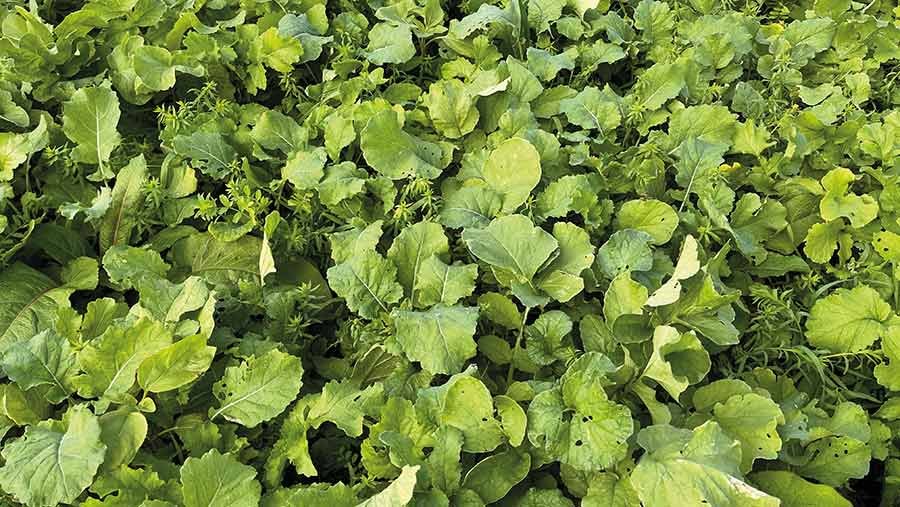
13-species cover crop for overwintering © Hayley Chapman
4. Green waste bedding
Using compost in sheds is hoped to be an environmentally friendly solution to bedding that will also have a high nutrient value when combined with dung and spread on fields.
The bedding is produced from composted garden waste from Cornish houses. Recycling this as bedding gives the by-product a new use.
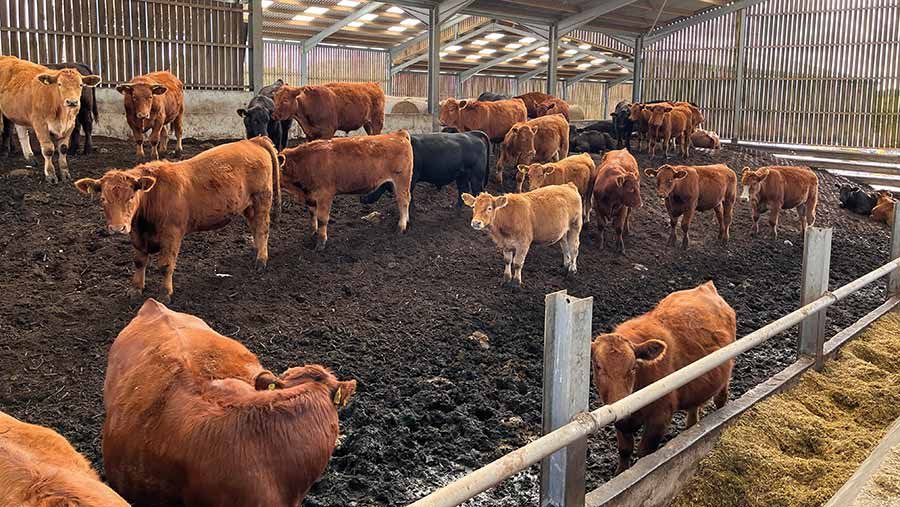
Green compost bedding at Blable Farm © Hayley Chapman


